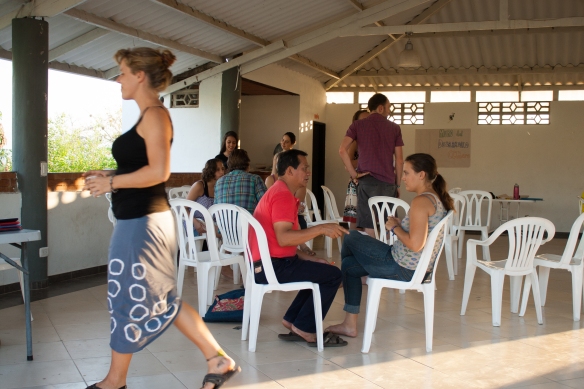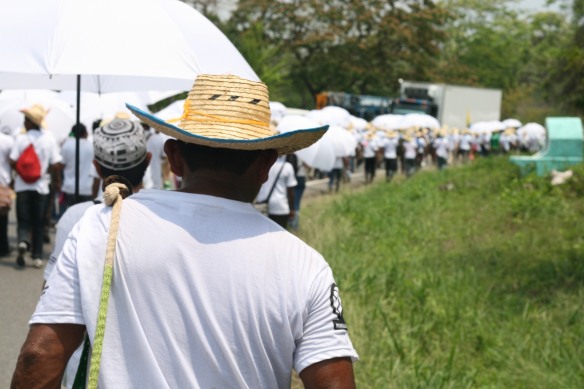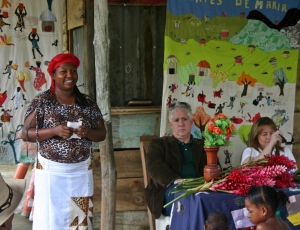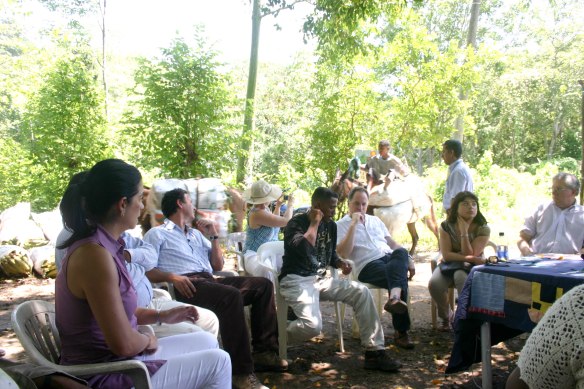Anna Vogt is the MCC LACA Advocacy and Policy Analyst. This post was originally published on Anna’s personal blog.
At one point during a discussion on development paradigms at the last MCC Colombia retreat, Terry directed us to divide into two groups, depending on our first instinct when entering a new group of people or situation. In one group were all the people who immediately look for the power structures. Who has control and who does not? In the so called kumbaya group was everyone whose first instinct is to monitor the feelings. Is everybody getting along?
My only hesitation before joining the second group was wondering what everyone else would think. That thought only made my selection more obvious and I quickly joined my fellow kumbaya seekers.
Later, at a different meetings, we were talking about how kumbaya people usually work in positions like Connecting Peoples, leading learning tours and bringing people together, while power people tend towards advocacy.
As any good kumbaya person would, I got a little anxious. What am I doing?
Sure, I may love protests and direct nonviolent action just as much as the next power structure person, but that is mainly because of the energy that comes with trying to boldly make a difference, together. I get worried months before I even think about becoming angry, in contrast to a lot of my power friends. More than anything, I love a feel-good story about reconciliation and believe that seeking points of resonance, through creativity and connection is a great life goal. Am I passionate enough, angry enough, strategic enough, critical enough, for advocacy?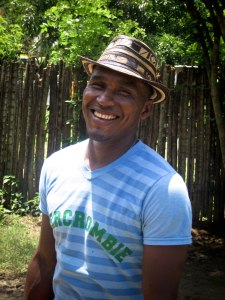
Whenever he was in a pensive mood, Alex would sit me down and tell me things I needed to know. Topics ranged from the importance of building trust with youth to the three motorcycle ride rule. I was sitting in one of their uncomfortable blue chairs a few months before I left Mampujan as Alex began to ruminate on relationships, specifically between community leaders and organizational leaders. Just over a year before our conversation, the government had threatened to reduce Mampujan´s reparations from the amount laid out in their court order to the amount provided in the broader Victim´s Law. A reparations fund, set up to hold the surrendered wealth of the paramilitaries was empty, because thevictimizers had not actually turned in their riches.
The community was furious. No one had even informed them; I was the first one to find out as my google alert set to Mampujan started filling my inbox with news of their supposed reparations.
“Instead of going out and burning tires,” Alex reminded me, sitting forward. “We called our friends.”
Over the last seven years, Mampujan has made a remarkable number of friends in high places. Leaders have participated in court hearings, in festivals, in conferences, and in thousands of meetings. I was there when a high powered US Embassy attorney asked for second helpings of lunch in Juana´s house and when the director of USAID Latin America landed his helicopter in a field behind Mampujan Viejo and took off again with gifts of homemade jam.
Everytime someone called them to ask for their presence, the answer was always yes. I once begged Juana to say no, to something, for her own sanity, yet the only person she refused to listen to was me. “You don’t understand, Anna,” she replied. “These are our opportunities and if we don’t take hold of them today, they will not exist in the future.”
Her strategy paid off when the leaders called then-current head of the MAPP-OEA (Support Mission to the Peace Process of the Organization of American States), a Mexican who was visibly moved by the community in every meeting he attended. He called his contacts in the Congress. Another friend invited the leaders to Bogota, where they joined the MAPP-OEA in quickly arranged, closed-door meetings. After a flurry of activity and worry, the state announced that it had made a mistake. Reparations would continue, on schedule and with the original amounts.
“You see,” said Alex as he finished reminiscing, “That is how we do things around here. We could be angry all the time, storm out of meetings to make a point, or refuse to talk to anybody. But we don’t. Instead, we invite people into our homes, make them feel comfortable, and tell them our stories, to show them that we are also human. Once they see that, we have allies for life. This is friendship advocacy.”
I like to call it kumbaya advocacy. Of course, it involved strategy and critical thinking. I also don’t believe that people need to grovel to get what they deserve, but rather that the community leaders remembered that the people they were dealing with where just that, people. Like anyone, with power or not, they had feelings and would make different decisions depending on how comfortable they felt in a situation.
There are countless stories like this one. Another moment that has stuck with me was a phone conversation while I was doing a research internship on Indigenous education in Canada. I ended up talking about the formation of the International Declaration on the Rights of Indigenous Peoples with a member of the Friends Service Committee, a Quaker organization. Everyday, delegates from Indigenous groups and various states would tensely argue the different points of the declaration, with every comment on the record. In the evening, Quakers would invite people to their home near the UN buildings in Geneva. It became a space of safety, mediation and encounter between people with very different opinions, to discuss ideas and conclusions, off the record. The public debate in the UN was important, but the private meetings, over dinner and in an atmosphere of trust, enabled the finalization of the Declaration.
When I think about looking for moments of resonance, of that connection between human beings where change can take place, it doesn’t seem quite as far fetched. I have much to learn from all the various ways of engaging in advocacy, but that does not negate my own preferences nor the power of relationships.
Let’s all work together. I mean, as long as y’all feel comfortable with that.

